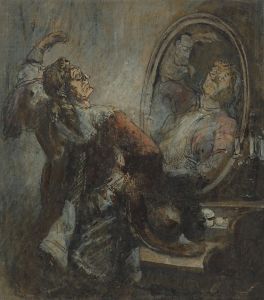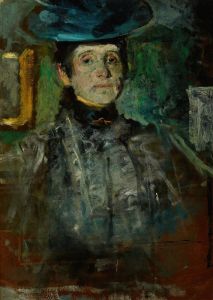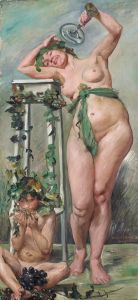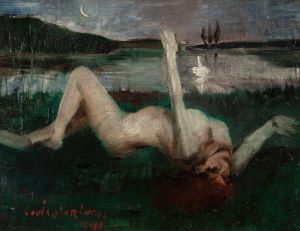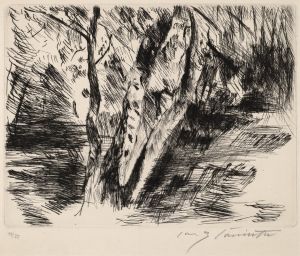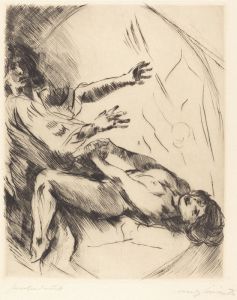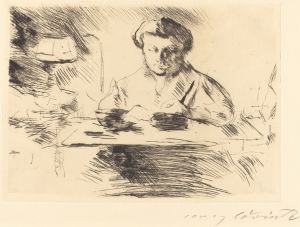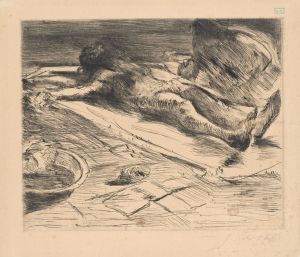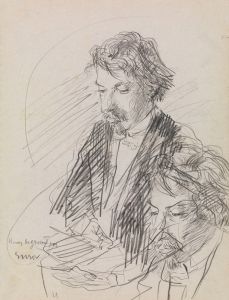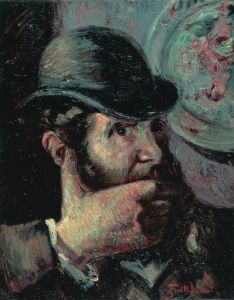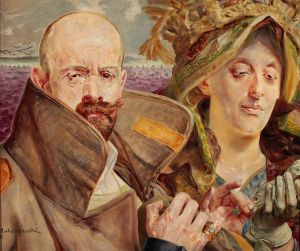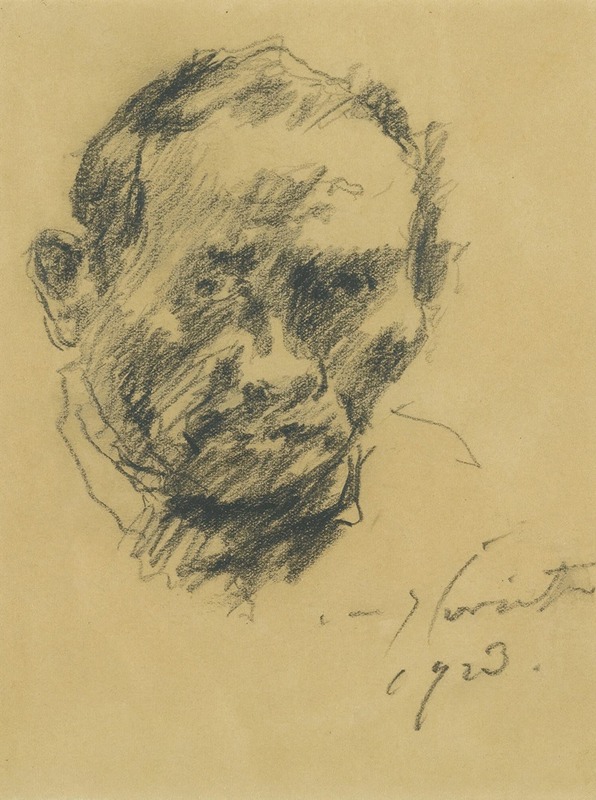
Selbstbildnis
A hand-painted replica of Lovis Corinth’s masterpiece Selbstbildnis, meticulously crafted by professional artists to capture the true essence of the original. Each piece is created with museum-quality canvas and rare mineral pigments, carefully painted by experienced artists with delicate brushstrokes and rich, layered colors to perfectly recreate the texture of the original artwork. Unlike machine-printed reproductions, this hand-painted version brings the painting to life, infused with the artist’s emotions and skill in every stroke. Whether for personal collection or home decoration, it instantly elevates the artistic atmosphere of any space.
Lovis Corinth, a prominent German painter and printmaker, created several self-portraits throughout his career, reflecting his evolving artistic style and personal circumstances. Among these works is "Selbstbildnis" (Self-Portrait), which exemplifies Corinth's mastery of expression and his engagement with themes of identity and self-reflection.
Lovis Corinth was born on July 21, 1858, in Tapiau, East Prussia (now Gvardeysk, Russia). He studied art in Königsberg, Munich, and Paris, where he was influenced by both academic traditions and the emerging Impressionist movement. Corinth became a leading figure in the Berlin Secession, an art movement that sought to challenge conservative artistic norms in Germany.
"Selbstbildnis" is one of many self-portraits Corinth painted during his lifetime. These works often reveal his introspective nature and his ability to capture the complexities of human emotion. Corinth's self-portraits are notable for their candidness and psychological depth, often portraying him in various moods and stages of life. His style evolved significantly over the years, transitioning from a more naturalistic approach to a freer, more expressive technique, particularly after he suffered a stroke in 1911.
The stroke left Corinth partially paralyzed on his left side, but he continued to paint with his right hand. This event marked a turning point in his artistic career, as his later works became more dynamic and emotionally charged. His self-portraits from this period often convey a sense of vulnerability and resilience, reflecting his determination to continue creating despite physical challenges.
While specific details about the creation date and context of "Selbstbildnis" may vary depending on the particular self-portrait in question, Corinth's self-portraits collectively serve as a visual diary of his life and artistic journey. They offer insight into his personal struggles, his artistic evolution, and his engagement with broader artistic movements of his time.
Lovis Corinth passed away on July 17, 1925, in Zandvoort, Netherlands. His self-portraits remain an important part of his legacy, celebrated for their honesty, technical skill, and emotional depth. Today, his works are housed in major museums and collections worldwide, where they continue to be studied and admired for their contribution to modern art.





